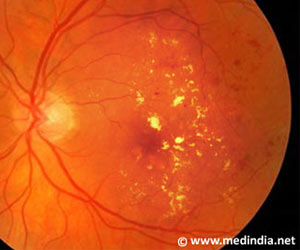
‘Researchers at The University of Texas at Arlington have developed a new platform that uses ultrafast near-infrared lasers to enable vision restoration in patients with photo-degenerative diseases.’
Tweet it Now
Mohanty demonstrated the effectiveness of the new method in a recent article published by the Nature journal Light: Science & Applications. In his study, Mohanty and his team compared their ultrafast near-infrared laser-based method of delivering genes with the popular non-viral chemical gene delivery system known as lipofection. The laser-based method creates a transient sub-mircometer hole that allows the gene for light-sensitive proteins, or opsins, to permeate into the damaged retinal cell. The genes are then activated to produce the opsins, which attach to the cell membrane and convert external light into the photocurrent signals that are basis of sight.
In Mohanty's experiments, the laser-based method gave better results than chemical gene delivery in terms of the amount of opsins produced and the number expressed on the membrane of the cell. It was also able to target cells one by one where the chemical gene delivery system cannot be that specific.
Furthermore, the laser-based method was also able to effectively deliver large packages of genes encoding a wide spectrum of colors to damaged retinal cells, which could enable broadband vision restoration in patients with photo-degenerative diseases. With aging populations in many countries, the number of macular degeneration sufferers is expected to reach 196 million worldwide by 2020 and increase to 288 million by 2040, according to The Lancet.
Mohanty is the principal investigator for the research detailed in the article, 'Optical delivery of multiple opsin-encoding genes to targeted expression and white-light activation.' The research team included Kamal Dhakal and Subrata Batabyal of the UTA biophysics and physiology laboratory, Weldon Wright of NanoScope Technologies and Young-Tae Kim of UTA's Bioengineering Department. A National Institute of Health grant supported the initiative.
Advertisement
That study demonstrated that optogenetic stimulation could be more accurate and effective than current methods of delivering stimulation for pain relief. It also enabled the researchers to see how different types of pain activated neurons in the brain's thalamus.
Advertisement
Mohanty joined UTA in 2009 from the Beckman Laser Institute of the University of California, where he did post-doctorate research in in biophotonics. He earned his doctorate in physics from the Indian Institute of Science. His recent and varied investigations have included mapping neural circuits in the brain, looking at how neuron growth can be controlled in the laboratory and new methods to pinpoint cancer treatment.
Source-Eurekalert













